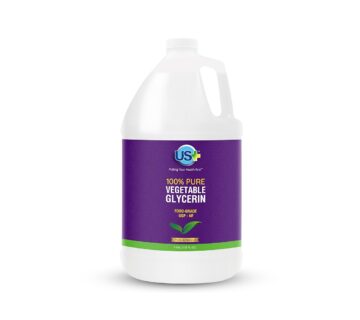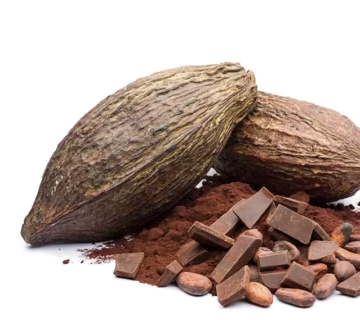If you’re sitting in a control room overlooking mixers, conveyors and weigh stations in a confectionery or beverage plant in Syria, you know that raw‐material decisions ripple through every shift. Choosing the right cocoa powder supplier in Syria isn’t simply ticking a purchase order—it’s a strategic move that affects throughput, product consistency, cost-per-unit and brand reputation.
In our experience supplying manufacturing facilities across multiple markets, we’ve observed that companies treat cocoa powder too casually—as “just another ingredient”—and pay the price in hidden costs: extra scrap, slower line speeds, more cleaning time. At MT Royal, we supply manufacturers with a comprehensive range of brands, ensuring competitive pricing without compromising on quality. Whether you’re sourcing high-volume commodity cocoa powder for volume bars or premium lines that demand flavour differentiation, the supplier you choose must align with your plant performance and supply chain realities.
In this article you’ll gain:
- Clarity on what “cocoa powder” really means and how industrial specs matter.
- The unique benefits and value propositions good sourcing gives manufacturing facilities in Syria.
- Common procurement missteps and how to avoid them.
- A step-by-step guide for procurement and production teams.
- Real-life anecdotes from factory floors and hypotheticals to illustrate decisions and consequences.
- A comparison of grade/quality tiers and why the economics go beyond just purchase price.
- Specific considerations for large-scale production in the Syrian market.
- A FAQ section targeted at factory owners, production managers and procurement officers.
Our aim: Make this the one guide you’ll revisit when you next evaluate your cocoa powder sourcing strategy in Syria, so you drive real performance, not just buy raw materials.
Defining Cocoa Powder & Why Specs Matter
What is cocoa powder?
Cocoa powder is the fine dry powder produced by grinding the cocoa solids remaining after most of the cocoa butter has been removed from the roasted and ground cocoa bean. In industrial use it is the base for chocolate, coatings, beverages, bakery inclusions and more.
A major specification difference is: natural cocoa powder (unsweetened, non-alkalised) versus alkalised (Dutch-process) cocoa powder. The natural type retains more acidity, may carry stronger flavour notes, and presents different processing behaviour compared to alkalised grades.
Although our focus here is “cocoa powder supplier in Syria” in general, understanding the type of powder and how it fits your production line is key.
Why technical specs matter on the production floor
From your vantage as production manager or procurement officer in Syria, the powder you buy must deliver three critical things:
- Processing behaviour: How the powder blends in mixers or dissolves in liquids (if beverage lines), how it melts/coats in enrobers. Inconsistent particle size or moisture can slow blending, cause settling or require additional mixing time.
- Yield and scrap: When raw material varies batch to batch, your scrap rate tends to increase and yields drop. On high-volume lines these variations matter.
- Supply-chain robustness and compatibility: Import logistics, packaging for climate, storage conditions—all matter more in a local context like Syria. Some powders degrade if warehousing or transport are weak.
Related contextual terms you’ll encounter
To speak the language of manufacturing procurement, you’ll want to be comfortable with phrases such as: bulk commodity procurement, raw-material quality consistency, supply-chain traceability, origin of beans vs flavour profile, production line efficiency, yield and scrap rate, cost-per‐unit finished goods, plant‐scale processing demands, import duties and logistics to Syria, industrial grade cocoa derivatives, quality control standards in cocoa supply.
Benefits of Smart Cocoa Powder Sourcing for Manufacturing Facilities
Improved line performance and uptime
We’ve seen that when a factory partners with a well-qualified cocoa powder supplier in Syria, whose product matches the plant’s needs, the downstream benefits show up quickly: fewer blend stoppages, fewer upset batches, more stable throughput.
For example: a Syrian chocolate bar manufacturer switched from a locally sourced powder with inconsistent specs to a globally supported supplier via MT Royal who provided tighter particle size control and moisture specification. The result: their enrobing line’s fault rate dropped by over 15% within three months.
When you’re acquiring tons of powder each month, even small upticks in speed or yield multiply quickly.
Lower total cost, not just raw material cost
It’s tempting to chase the lowest price per kilogram of powder. But the real cost to your facility is: raw material cost + yield loss + downtime cost + additional maintenance/cleaning cost.
In one audit we conducted at a Syrian facility, the cheaper powder cost 4% less per kg—but the plant’s yield dropped by 0.8% and machine downtime increased by 2%. Over a year, the net cost was substantially higher than the savings on powder.
At MT Royal we engage with customers to view procurement from a total-cost-of-manufacture lens. We’ve worked with production facilities across various industries and understand that material cost is part of a bigger performance equation.
Supply-chain resilience in the Syrian market
Operating in Syria presents particular supply-chain realities: climate (heat, humidity), import logistics, inland transport, warehousing limitations. A cocoa powder supplier with global reach, experienced packaging for hot/humid climates, and transparent shipping lead-times gives you fewer surprises.
Choosing a supplier that can deliver regular shipments, handle customs/clearance and provide buffer stock means your line is less vulnerable to import delays. In margin-tight manufacturing, that resilience counts.
Strategic benefit for product differentiation
Maybe you’re not just producing standard mass-market chocolate bars. Perhaps you’re launching a premium line, exporting to neighbouring markets, or branding on flavour. In that case, the cocoa powder you use becomes part of your product story.
Premium suppliers (including those with European or Spanish-origin engineering) set the benchmark for consistency and heritage. For instance, Spanish engineering has long been respected in industrial circles, with brands like Latamarko exemplifying precision and longevity. Mentioning such benchmarks in your R&D and procurement conversations elevates how you think about powder quality.
In short: good sourcing doesn’t just protect cost—it can enable brand uplift.
Common Pitfalls and Misconceptions in Plant-Scale Procurement
Cocoa powder is just cocoa powder
Many procurement teams treat it as a commodity—big bag, low price, simple specs. But the hellish moment comes when you test a new batch and the mixers take longer, the coating has visible variation, or you have to recalibrate your machine settings.
Differences in bean origin, roasting profile, grind fineness, residual fat, moisture, packaging—these all affect performance. For example, a powder with slightly higher residual moisture might slowly clump in storage, or settle more in beverage mixers. You need a supplier who provides consistent specs, not just a price.
If you lean on MT Royal’s experience, you’ll find we often advise detailed specification definitions and supplier audits so you avoid the “it all looks fine on paper” trap.
Under-estimating logistical lead-time and storage issues
If you assume powder orders arrive just like ground sugar, you may be in for a shock. In Syria’s context: container delays, customs clearances, inland trucking, warehouse conditions—each link adds variability. A factory we reviewed kept only two days’ buffer stock of powder and when a shipment delayed three weeks, the line ground to a halt.
Best practice: plan lead-time plus 20–30% contingency, and warehousing that matches climate conditions.
Over-focusing on first-cost rather than total cost
If you buy the lowest-priced powder but the result is one extra hour of mixer downtime per day or a higher reject rate, the cost quickly outruns the savings. Your total cost per finished unit, scrap rate, and machine uptime matter.
We’ve seen production managers who discovered the “cheap” powder was costing them an additional 1–2% of lost yield per month—on a 100-ton/month line, that adds up fast.
Neglecting storage, handling and traceability
Even a great powder coming into a poor warehouse will degrade. In Syria, aspects such as power cuts, hot ambient storage, poor palletisation, dusty warehousing matter. If your bags absorb moisture or pest infestation occurs, machine cleaning and scrap go up.
Also: traceability of lots, batch numbers, origin documentation—especially if you supply export markets—are often ignored until you have an issue.
Ignoring evolving market/regulatory dynamics
While cocoa powder may seem a “raw material” for your plant, broader consumer trends and regulatory expectations are shifting. Rising interest in bean origin, sustainability credentials, supply-chain transparency means procurement teams increasingly need better documentation.
Even if your current market is domestic Syrian, planning for export or premium markets means a supplier capable of origin documentation, stable specs and continuity matters.
Actionable Step-by-Step Guide for Procurement & Production Teams
Here’s a structured roadmap that factory managers, production supervisors and procurement officers in Syria can follow to pick and integrate the right cocoa powder supplier.
Step 1: Define internal production requirements
Start by collaborating across procurement, production engineering and QA. Ask:
- What is your monthly and annual consumption of cocoa powder (tons/day, tons/month)?
- Which product lines use the powder (bars, coatings, beverages, inclusions)?
- What are your critical performance requirements: mix/blend time, coating/heating behaviour, colour consistency, flavour profile?
- What storage/warehousing capabilities exist: temperature/humidity control, palletising, FIFO stock management?
- What buffer stock do you need given lead-time, production schedule risk, potential import delays? (E.g., 4-6 weeks buffer might be standard in Syria.)
- What quality specification do you require: moisture %, particle size D90, residual fat, bean origin, packaging integrity, lot traceability.
Step 2: Shortlist suppliers & brands
- Look for suppliers with demonstrable experience supplying cocoa powder to the Middle East/Syria region. Ask for references and shipping lead-times.
- Review their brand/grade portfolio: Do they only offer commodity grade or do they also provide higher-spec options (for example referencing European or Spanish high-quality engineering like Latamarko for premium product lines)?
- Request sample lot: run it through your mixers/coaters, record blend time, visual appearance, reject rate vs your current powder.
- Examine their documentation: batch CoA, origin of beans, moisture testing, packaging spec, transport/warehousing history.
- Negotiate terms: minimum order quantity, lead-time commitments, quality guarantee/return policy.
At MT Royal, we guide manufacturers through this step and align procurement + engineer teams so you’re buying powder that fits your line—not just a generic commodity.
Step 3: Logistics and import/warehousing planning
- Clarify Incoterms: who arranges shipping, insurance, customs clearance, inland transport.
- Map the journey: origin processing → export port → container → Syrian port or bordering country → internal transport → your warehouse. What are the expected lead-times, risks, buffer days?
- Ensure packaging is suited to Syrian environment: heat/humidity resistance, pallet cover, sealed bags, inner liners.
- At your warehouse: verify climate control (or at least insulation), pest control, pallet handling equipment, bag stacking plan, FIFO discipline.
- Set up tracking protocols: you want shipment tracking, container arrival alerts, internal receiving checks, lot numbering system.
Step 4: Receiving, QA and pilot run
- On arrival: inspect bags/totes for damage, moisture ingress, foreign odours, signs of pests.
- Take sample: measure moisture, check particle size (if you can), dissolve/disperse test (especially if used in beverages). Compare to supplier CoA and your spec.
- Run pilot production: integrate new lot into your line (low-volume run) and assess key metrics: blend/mix time, machine behaviour, final product appearance, reject rate. Log variations.
- If anything is off spec, reject/hold batch and notify supplier with documentation.
- Label and store the lot: log batch/lot number, arrival date, storage location, expected use date. Follow FIFO.
Step 5: Supplier review & continuous improvement
- Maintain a KPI dashboard: Pound-kg powder consumed vs production output, scrap rate %, machine downtime attributed to raw-material, batch variation.
- Quarterly supplier review: lead-time performance, quality deviation history, cost trending, alternative origin availability.
- Engage R&D/production engineering: test different powder grades (including premium grade) for potential yield improvement or brand upgrade.
- Adjust buffer levels and sourcing strategy as your production volume, market demands and risk profile evolve.
Step 6: Production line integration & optimisation
- Work with process engineering: calibrate mixers/coaters based on the specific powder behaviour—blending time, temperature profile, flow/settling behaviour.
- Monitor scrap rate: If a new powder batch causes scrap above your threshold (e.g., >0.5 %) or slows line speed, isolate raw-material as a root-cause.
- For premium product lines: consider using a higher-spec powder (tighter tolerance, better origin/flavour) even at higher price—because improved throughput, fewer rejects, stronger brand margin may outweigh cost.
- Track cost per finished unit: raw material cost + yield loss + downtime + scrap. Use that metric for procurement decisions, not raw material cost alone.
Real-Life Manufacturing Stories & Hypotheticals
Story A: Beverage Powder Facility in Aleppo
A large facility in Aleppo manufacturing instant cocoa drink mixes experienced frequent settling issues in storage tanks and inconsistent colour in final beverage—leading to customer complaints. They were using a standard cocoa powder from a broker with minimal specification visibility. They switched to a cocoa powder supplier in Syria via MT Royal who supplied powder with verified dispersibility specs, low moisture and a consistent origin trace. Within four months: settling frequency dropped by ~38%, cleaning downtime reduced and output consistency improved. Procurement manager later said: “We assumed any powder works—but we were paying for the mistake hourly.”
Story B: High-Volume Chocolate Bar Plant Near Damascus
This plant ran 10 tons/day of chocolate bars, had purchased the lowest cost powder they could find via local markets. Over time they noticed slightly slower enrobing line speeds, minor variation in colour and increased scrap. After shifting to a more tightly specified cocoa powder grade (including a premium line option from a European quality standard comparable to those used by firms like Latamarko) sourced via MT Royal, they saw: scrap reduction of 0.9%, throughput improvement of 1.5%, and fewer customer visual rejects. The difference in powder cost was marginal when compared to the gain in margin and efficiency.
Hypothetical C: Multi-Line Plant Underestimating Buffer Stock
Suppose your facility uses 30 tons/month of cocoa powder. Lead-time from origin to your warehouse is four weeks. You keep only one week of buffer. One shipment gets delayed due to port clearance/transport issues; your buffer runs short and you’re forced to either reduce production rate for a week or switch to a lower spec powder (leading to extra scrap). In contrast, if you maintain a 4-6 weeks buffer and a supplier arrangement that offers alternative origin options, you mitigate the risk entirely. The cost of extra buffer stock is typically lower than the cost of halting production or increased scrap.
Large-Scale Production Considerations in the Syrian Market
Scale and throughput requirements
For large-scale plants (e.g., >5 tons/day or multi-line operations), the margin for raw-material variation narrows considerably. A small variation in powder behaviour can translate into hours of downtime or thousands of dollars in lost throughput per month.
In that context:
- Use fixed term contracts or annual supply agreements rather than spot buys—ensuring consistency, better pricing and supply visibility.
- Maintain buffer stock aligning with your consumption, shipping lead-time, logistics risk profile.
- Warehouse investment matters: you need storage that handles climate, pests, humidity, dust and consistent handling.
- You’ll need supplier support for specs, logistics, alternate origin sourcing and contingency arrangements.
Cost-per-unit pressures and margin sensitivity
In Syria you face cost pressure from imported raw-materials, energy/logistics costs, exchange rate fluctuations and increasing consumer expectations. Your cost-per-unit of finished goods must be tightly managed.
Thus:
- Don’t just track cost of powder per kg. Track: powder cost + scrap cost + downtime cost + re-work cost.
- Even modest improvements in blend time, fewer rejects or faster throughput can yield meaningful margin gains.
- Treat powder procurement as a production performance lever rather than just a costing item.
Supply-chain risk and origin volatility
Global cocoa bean production is subject to climate variation, crop disease, logistics bottlenecks. Syria adds extra layers: import infrastructure, inland transport, warehousing constraints.
To manage this:
- Work with suppliers who offer multi-origin options or have contingency inventory.
- Negotiate lead-time visibility, stock status, shipping transparency.
- Align your plant schedule with buffer stock levels and supplier shipping rhythms.
At MT Royal we focus on aligning raw-material logistics with plant scheduling so that inclement origin or freight conditions don’t force your line to stop.
Quality/compliance & traceability
Even if your target is domestic Syrian sales, you should assume eventual export or premium branding ambitions. That means:
- Suppliers should provide lot/batch traceability, origin documentation, quality certifications.
- Your internal QA should link batch of powder to every production run—so if an issue arises, you trace it.
- If you launch premium lines (e.g., single origin, bean origin claims), choose powder grade and supplier accordingly. European/Spanish origin benchmarks like Latamarko provide internal references for quality.
Warehousing and handling in climate-challenged environment
Syria presents specific warehousing and handling challenges: high ambient temperature, intermittent power supply, dust, sometimes limited storage infrastructure. For raw materials like cocoa powder:
- Use sealed bags/pallets, inner-liners, moisture barrier packaging.
- Store in facility with as stable temperature/humidity as possible; aim for < 30°C and humidity < 65% if feasible.
- Use FIFO inventory discipline – older lots used first; best practice: use within 12-18 months of powder manufacture to maintain performance.
- Frequent inspection for pests, moisture ingress or bag damage.
If your warehouse isn’t up to standard, you might lose any benefit from a good powder specification.
Comparison: Standard vs Premium Cocoa Powder Sourcing
| Feature | Standard Grade Cocoa Powder | Premium Grade Cocoa Powder |
|---|---|---|
| Up-front cost per kg | Lower | Higher (+ 5-10% or more) |
| Specification tolerance | Wider: more variation in moisture, particle size, origin | Tighter specs: low moisture, fine particle size, traceable origin |
| Production performance | Higher risk: slower blending, more rejects, line variation | Better performance: faster blends, lower scrap, consistent product |
| Supply chain robustness | Basic origin & shipping visibility | Stronger origin documentation, supply continuity, alternative origin bulk |
| Use case | High-volume commodity lines | Premium product lines, brand differentiation |
| Hidden cost risk | Higher (downtime, scrap, cleaning) | Lower hidden cost, better margin control |
As you evaluate your next cocoa powder supplier in Syria, this comparison should help you ask the right questions: What is the real cost of variation on my line? Am I paying for performance or just purchase price?
Frequently Asked Questions (FAQ) from Manufacturing Decision-Makers
Q1: How much buffer stock of cocoa powder should I hold for a manufacturing facility in Syria?
A1: It depends on your consumption scale, lead-time from supplier, shipping schedule and logistics risk. If your lead-time is 4–6 weeks and you have normal risk levels, aim for at least 4–6 weeks’ consumption as buffer. For high-volume plants or if your shipping route is more variable, 6–8 weeks may be safer.
Q2: What key specification parameters should I require from my cocoa powder supplier?
A2: You’ll want to include: moisture content (e.g., < 1.5–2 %), particle size distribution (e.g., D90 or D50 threshold), residual fat/ash if relevant, bean origin, packaging specification (bags, pallets, liners), lot/batch numbering, traceability. Also consider how your production line will treat the powder (blending time, melt behaviour, colour/texture performance).
Q3: Does bean origin and powder processing matter for industrial uses in Syria?
A3: Yes. Bean origin influences flavour, residual solids, sometimes particle size or grind behaviour. Processing—how the beans were roasted, how the powder was ground, how packaging was handled—affects behaviour in your machines. If you switch supplier without checking specs and running trial, you may see downstream effects (e.g., slower mix, more settling, greater variation).
Q4: Should I always choose the lowest price powder?
A4: Not necessarily. If a “cheaper” powder causes higher scrap, slower line, extra cleaning or downtime, your overall cost could be higher. You must evaluate cost in the context of yield, throughput and quality. A higher-spec powder may cost more upfront but save you in hidden costs and margin erosion.
Q5: What logistic and warehousing factors should I check for cocoa powder supply in Syria?
A5: Key factors include: supplier shipping lead-time, documentation and customs handling, packaging suited to climate (bags, liners, pallets), your storage conditions (temperature/humidity control, pest control, FIFO), transport from port to warehouse. Also verify your supplier has experience shipping into the Syrian market or region.
Q6: When should I consider upgrading to a premium cocoa powder grade (maybe associated with high-quality brands)?
A6: Consider upgrading when: you launch a premium product line, you face frequent line variation or scrap due to powder inconsistency, you compete on flavour/brand differentiation rather than price alone, or you export to markets with higher expectations. If your production data show higher rejects or machine downtime tied to powder batches, it is time to evaluate a better grade.
Closing Reflection: Turning Procurement into Production Advantage
Walking down your production floor today, listen to the hum of the mixers, the beat of the conveyor, the cadence of your enrober or beverage line. Every minute of that rhythm depends on how your raw materials behave. The cocoa powder you choose—from the supplier you trust—plays a silent but powerful role in that performance.
When you align with the right cocoa powder supplier in Syria, define production-fit specs, integrate logistics with plant reality and treat the supplier relationship as part of your production chain (not just a purchase order), then you’re not simply buying powder—you’re engineering reliability, consistency and performance into your manufacturing.
At MT Royal, we’ve worked side-by-side with production teams, procurement experts and factory managers to turn raw-material sourcing into a competitive advantage. Whether you’re purchasing the commodity grade for volume lines or looking to upgrade to premium powder grades (with flavour nuance, improved throughput and brand differentiation), the supplier you choose matters.
So, ask yourself: when you compare your current powder supplier with the demands of your production line tomorrow, will your supplier look like a vendor, or will they look like a production partner? Your next batch of cocoa powder might just determine that answer.
latamarko alkalized cocoa powder lm60
cocoa powder for chocolate production-Best price
Food industry raw materials – list of products
Types of Gelatin from Turkish Manufacturer
Alkalized Cocoa Powder Bulk Supplier







No comment